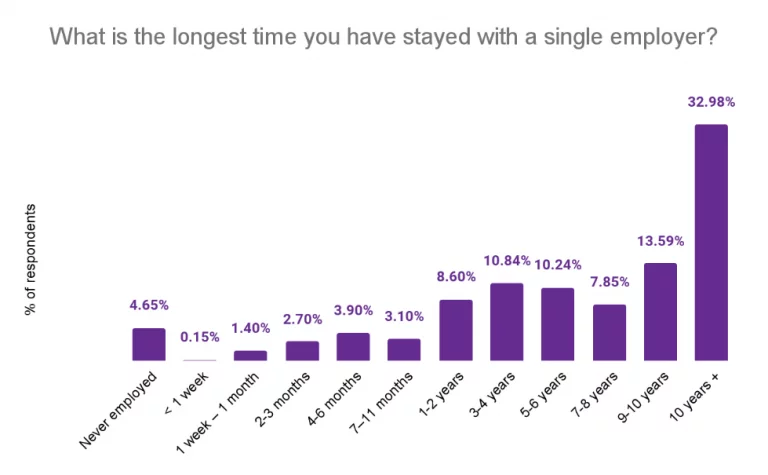
The 3 Levels Of Management
Contents
An efficient and clearly defined management structure is key to the successful operation of a business.
A business will have a management hierarchy of individuals.
Each level of the hierarchy holds responsibility for managing a part (large or small) of the organisation.
Typically, an organisation’s management hierarchy can be split into 3 levels, even if in larger organisations, each of these 3 levels can themselves be subdivided.
This article will explain how a 3-level management system works and what each level does.
We cover this course in our comprehensive Line Management Courses!

What Are The 3 Levels Of Management?
The 3 levels of management are:
- Senior management / executives
- Middle management
- Line management
In a company with a typical top-down organisational structure, the senior executives plan strategies and objectives and communicate these down to those lower in the business’s hierarchy.
Managers at lower levels (middle management and line management) are then tasked with overseeing the communication and implementation of these strategies.
Let’s look at each of these levels in more detail:
Level 3: Top Level Management / Senior Executives
Level 3 is the top level of management and is where executive authority lies.
This always includes the chief executive/managing director and board of directors.
In larger businesses, level 3 also consists of the level of executives below the board of directors.
Staff at this level create the company’s strategic plans and broad policies, and have responsibility for major decisions that will be implemented by those further down the hierarchy.
Top management is also responsible for communicating with shareholders and other external stakeholders.
Level 3 managers are generally focused on long-term and cultural issues and removed from the day-to-day nitty-gritty of the business.
Level 2: Middle-Level Management
Middle management links a company’s senior executives and line managers.
Their responsibilities involve communicating strategies down the chain of command and passing relevant issues to Level 3 management.
They often rely on project management dashboards and similar tools to track progress, manage resources, and ensure that key objectives are being met efficiently.
Middle management roles usually offer direct responsibility for a particular area – for example, a branch or a department manager.
Staff in the middle management of management are expected to monitor the performance of the lower levels of management. They have a degree of autonomy to improve workflows in their business area.
Staff at this level will be more concerned with the day-to-day running of the business than senior management, but will also be expected to take a broader view of the company’s direction than line managers.
Level 1: Line Managers / Front Line Management
Line managers (also known as front-line managers or junior managers) are on the first rung of the management hierarchy and are responsible for the performance of front-line workers.
Staff members at this level are focused on day-to-day operations and developing their management experience. If you would more on this read our article – tips for supervisors.
A line manager will have a range of responsibilities, including setting up rotas, providing advice and support to staff members, giving performance feedback and motivating their team.
Why Do Organisations Typically Have 3 Levels Of Management?
Traditionally, most businesses have used a hierarchical management structure.
Experience has shown that it is the most effective way to run a business.
As with any organisational structure, there are advantages and disadvantages.
Let’s take a look.
Advantages
Clarity
The key benefit of a 3-level management system is that it provides clarity.
When all staff members know to whom they need to report and who should report to them, the possibility for confusion is far lower.
Communication
A simple hierarchy of authority makes it easier to communicate information, ensuring everyone from the top of the company down is on the same page.
Accountability
Defined roles ensure that everyone is accountable as responsibilities are clearly assigned.
Accountability ensures that good work will be recognised and underperformance won’t be missed.
Career Opportunities
A hierarchical organisation provides an identifiable career path for staff looking for new challenges and increased responsibility.
Resource Management
A clear hierarchy makes it easier to identify understaffed or overstaffed departments.
This allows for better deployment of resources.
By cutting out overlapping resources, you can improve efficiency without increasing expenditure.
Disadvantages
Lack Of Engagement
By definition, a hierarchy places most of the responsibility at the top of the chain.
This can lead to a lack of engagement from lower-level staff, as they may feel a lack of agency and ownership.
Lack Of Operational Understanding
A very hierarchical structure can lead to senior management being far removed from front-line workers.
In turn, this lack of front-line visibility can lead to senior managers making decisions that don’t work in practice with the obvious issues that can cause the business.
Slower Processes
A 3-level management system can be very rigid, with questions and decisions passing linearly up and down the levels.
In larger organisations especially, this can lead to slow decision-making and reduce the business’s ability to react to change.
Do All Organisations Have 3 Levels Of Management?
No. Many businesses have explored alternative ways of organising themselves, using technology to enable these new structures, in recent years.
Some of these experiments have worked while others have not, and the business has reverted to a traditional 3-level management structure after a time.
A fascinating example is Haier which has tried multiple management structures during its life.
There are two major categories of alternative management structures that have been tried:
Upside-Down Management
Upside-down management puts authority and responsibility as much as possible in the hands of front-line workers.
An excellent example is Timpson’s which empowers the workers in its shops to change prices and pay up to £500 to settle a complaint without referring to anyone else in the organisation.
This management method means senior managers give up a significant degree of control, meaning individuals feel far more empowered and trusted.
Where businesses have made it work, they have had rigorous HR standards to ensure that only appropriate people are recruited.
Holacratic Systems
Holacratic systems are a type of hierarchy where directives are passed down from the senior management team to groups of people.
The structure below the top level is flat, with all or most employees on the same level.
Groups are responsible for completing tasks and projects.
As there are no defined job roles, individuals take on specific tasks rather than working to a fixed job description.
Individuals may be recruited to be members of a specific group in a company or just recruited to the business depending on the implementation of the system.
If individuals are not part of a specific group, they will be ‘recruited’ into groups on a project-by-project basis.
Businesses like Zappos, and Valve, operate a holacratic system.
Buffer has taken this innovation further, doing away with managers entirely.
The software manufacturer has several ‘task forces’ that change regularly, with each individual taking a share of the responsibility for ensuring targets are met.
Final Thoughts
While modern businesses all have views on the most efficient structure for a successful organisation, the 3-level management structure remains the most common.
As we have learned, there are potential drawbacks to this hierarchical system.
However, when implemented effectively, it has proven benefits – providing clear lines of communication, authority and respect.
Special thank you to geeksforgeeks for the pyramid!




